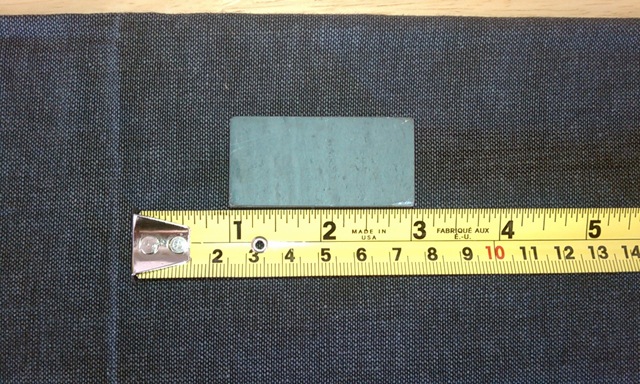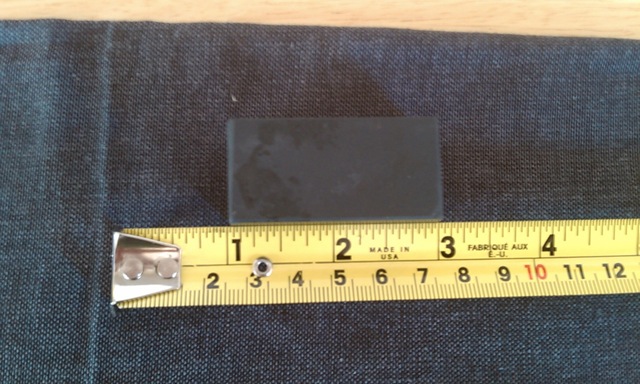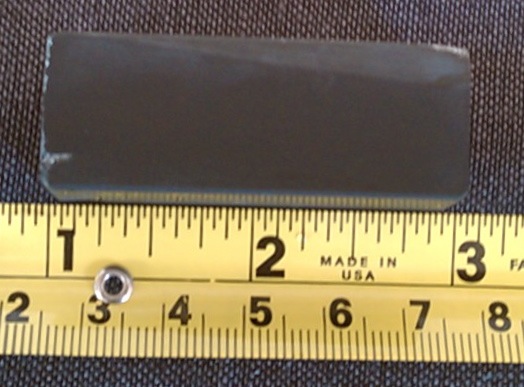Results 1 to 10 of 13
-
10-21-2010, 02:32 PM #1
 Which side of slurry stone to use help please
Which side of slurry stone to use help please
sometimes you dont know what you dont know right, so I am sorry for such a noob question but I finally cleaned up this stone and do not know which side of the slurry stone to use. Do I also need to lap the slurry
stone? If it is the Grey side is it almost used up as the profile picture shows?





-
10-21-2010, 02:41 PM #2

The slurry stones I have are just smaller pieces of the main hone, so as long as you have a flat side you can rub on the hone it doesnt really matter which side you use.
Yours slurry stone seems to have a darker and a lighter coloured side, and the lighter side matches the colour of the main hone? In that case I'd use the lighter side of the slurry stone.
Then again it could just be a case of different coloured strata of the same rock, in which case you could use either side?
I guess the only way to be sure is to try each side out and see what the results are like..!
-
10-21-2010, 02:44 PM #3

Thanks I asked because the Grey side sometimes catches on the larger hone and leaves a scratch in the hone is that normal?
-
10-21-2010, 06:33 PM #4

Any idea what type of hone this is, it puts a very shiny edge without any slurry. The slurry is milky white to yellowish
-
10-21-2010, 06:39 PM #5

Try the slurry stone both colors and see if one works better for you than the other. Note the way Norton recommended using a slurry stone in this old set of instructions. I have found this to be very effective. If your slurry stone has a sharp edge or a divot that is leaving scratches just lap it.
Be careful how you treat people on your way up, you may meet them again on your way back down.
-
The Following User Says Thank You to JimmyHAD For This Useful Post:
Dllandry (10-21-2010)
-
10-21-2010, 08:08 PM #6illegitimum non carborundum



- Join Date
- Jan 2008
- Location
- Rochester, MN
- Posts
- 11,552
- Blog Entries
- 1
Thanked: 3795
Could you please show the side of what you are calling a slurry stone? I suspect what you've got there is a two sided barber hone that has been cut into pieces.
Also, what is the large hone? If you use a different material for the rubber, then you are combining the characteristics of the two hones, and the material from the slurry stone may be more coarse than the large hone. If the slurry hone is a barber hone, then the lighter side is probably the more fine side.
-
10-21-2010, 09:02 PM #7
-
10-21-2010, 09:52 PM #8

Looks like a very promising stone. You said the slurry color is yellowish grey?
It looks like an Escher in one of the Escher threads from a few months ago.
-
10-21-2010, 09:57 PM #9

Yeah yellowish grey very slight yellow though not bright yellow by any means.
-
The Following User Says Thank You to Dllandry For This Useful Post:
Disburden (10-22-2010)
-
10-23-2010, 12:11 PM #10

I agree with Disburden that the stone looks like a Thuringian. The slurrystone looks natural, the light side actually looks like a Tam O'Shanter I have, but I could be wrong. A close-up would help. A Thuringian with a ToS slurriestone would not be ideal because a ToS is coarser and harder.
-
The Following User Says Thank You to Piet For This Useful Post:
Disburden (10-23-2010)


 LinkBack URL
LinkBack URL About LinkBacks
About LinkBacks






 Reply With Quote
Reply With Quote


